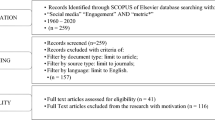Abstract
Background
Research evaluating mediated physical activity campaigns uses an unsophisticated conceptualization of the media and would benefit from the application of a media studies approach. The purpose of this article is to report on the application of this type of analysis to the Canada on the Move media campaign.
Methods
Through interviews and document analysis, the press release surrounding Canada on the Move was examined at four levels: inception, production, transmission and reception. Analytic strategies of thematic and textual analysis were conducted.
Results and Conclusion
The press release was well received by journalists and editors and was successfully transmitted as inferred from national and local television coverage, although there was no national print pickup. Canada on the Move was perceived by sampled audience members as a useful and interesting strategy to encourage walking. A holistic approach to media analysis reveals the complex and frequently messy process of this mediated communication process. Implications for future media disseminations of Canada on the Move are discussed.
Résumé
Contexte
La recherche sur les campagnes d’activité physique médiatisées fait appel à une notion simpliste des médias que l’on aurait avantage à remplacer par une approche d’étude des médias. Dans cet article, nous voulons rendre compte de l’application de ce genre d’analyse à la campagne de publicité-médias Canada en mouvement.
Méthode
Au moyen d’entretiens et d’analyses documentaires, nous avons examiné le communiqué de Canada en mouvement sous quatre angles: la création du message, sa production, sa transmission et sa réception. Nous avons ensuite mené des analyses thématiques et textuelles.
Résultats et conclusion
Le communiqué a été bien accueilli par les journalistes et les rédacteurs en chef, qui en ont assuré la transmission, comme on peut le constater d’après les reportages télévisés à l’échelle nationale et locale, mais il n’a pas été repris dans la presse écrite nationale. L’audience échantillonnée a perçu la campagne Canada en mouvement comme étant une stratégie utile et intéressante pour inciter à la marche. Une approche holistique de l’analyse média révèle la complexité et le caractère souvent désordonné du processus de communication s’appuyant sur les médias. Nous en avons tiré des conséquences pour la médiatisation future de Canada en mouvement.
Similar content being viewed by others
Bibliographie
Du Gay P. Production of Cultures/Culture of Production. Londres, Sage, 1997.
Hall S. Representation: Cultural Representations and Signifying Practices. Londres, Sage, 1997.
Van Dijk TA. News as Discourse. Hillsdale (New Jersey), Lawrence Erlbaum Associates, 1988.
Finlay SJ, Faulkner GEJ. Physical activity promotion through the mass media: Inception, transmission and reception. Prev Med 2005;40:121–30.
Fenton N, Bryman A, Deacon D, Buckingham P. Mediating Social Science. Londres, Sage, 1998.
Van Zoonen L. Feminist Media Studies. Londres, Sage, 1994.
Coffey A, Atkinson P. Making Sense of Qualitative Data. Londres, Sage, 1996.
Glaser BG, Strauss AL. The Discovery of Grounded Theory. Chicago (Illinois), Aldine, 1967.
Fuller J. News Values: Ideas for an Information Age. Chicago, University of Chicago Press, 1996.
Kitzinger J. The methodology of focus groups: The importance of interaction between research participants. Sociology of Health and Illness 1994;16:103–21.
Bolz N. The meaning of surface [consulté en ligne le 7 novembre 2005]. Sur Internet: https://doi.org/www.mediamatic.net/article-200.5761. html&q_person=200.1441.
Klein N. No Logo. Londres, Flamingo, 2000.
Peter J, de Vreese CH. Agenda-rich, agenda-poor: A cross-national comparative investigation of nominal and thematic public agenda diversity. International Journal of Public Opinion Research 2003;15:44–64.
Cormex Research. Media coverage of CIHR, January to March 2004. Dans: Media Analysis Report: Canadian Institutes for Health Research. Toronto (Ontario), Cormex Research, 2004.
Author information
Authors and Affiliations
Corresponding author
Additional information
Source of support: This study was supported by a research grant from the Canadian Institutes of Health Research (CIHR) Institute of Nutrition, Metabolism and Diabetes (INMD).
Divulgation des sources d’aide financière: Cette étude a bénéficié d’une subvention de recherche de l’Institut de la nutrition, du métabolisme et du diabète des Instituts de recherche en santé du Canada (IRSC).
French language version/Version en Français
Rights and permissions
About this article
Cite this article
Faulkner, G., Finlay, SJ. Canada on the Move: An Intensive Media Analysis from Inception to Reception. Can J Public Health 97 (Suppl 1), S17–S21 (2006). https://doi.org/10.1007/BF03405360
Published:
Issue Date:
DOI: https://doi.org/10.1007/BF03405360




